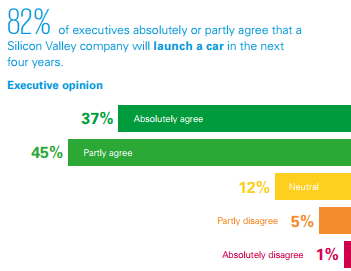Autonomous Vehicle Technology: Investing in Safe Self-Driving Cars

One of the most exciting automotive technology trends happening in Canada and globally is the emergence of autonomous vehicles. Self-driving cars reduce involvement in the driving process; this helps eliminate accidents, lower fatigue and stress, and improves passenger productivity. It’s a disruptive trend that will impact automotive manufacturers and technology developers alike for the foreseeable future.
Autonomous vehicles are still in their infancy, but in a short amount of time, significant progress has been made. Because of these improvements, there are many technologies being built into vehicles now that would seem like science fiction 20 years ago. As consumers become more comfortable with these technologies, more of the driving experience will be taken over by computer-guided systems.
However, before fully-autonomous vehicles can become a reality in Canada and other countries, significant work still needs to be done. For one, the legislative process could delay autonomous vehicle deployment and significant data on the safety of autonomous vehicles will need to be presented. But before this can be done, the technology still needs to be improved. Winter driving conditions are proving to be a difficult challenge for some autonomous devices, but technology developers are working to overcome these ‘roadblocks’.
FREE DOWNLOAD: THE TOP 4 TRENDS IN THE CANADIAN AUTOMOTIVE SECTOR
Autonomous Driving Technology: Current and Future Tech
The autonomous vehicle market will be filled with traditional and non-traditional companies fighting for market share. Silicon Valley companies such as Google, Uber, and Apple are working to develop fully-autonomous vehicles with impeccable safety records; this will pressure traditional automotive firms to increase technology development investments.
In fact, KPMG’s 2017 Global Automotive Executive Survey revealed that 82% of automotive executives believe a Silicon Valley company will launch a car with at least partial autonomy in the next four years. This rapid emergence of new competition will shock traditional automotive firms and will ultimately lead to higher investments in technology research and development so that they can remain competitive.
Partial Autonomy: Advanced Driver Assistance Systems
Fully autonomous vehicles are unlikely to be commercially available before 2020. Until then, advanced driver assistance systems (ADAS) will be an important tool to helping customers become comfortable with the concept of relying on artificial intelligence to control their vehicle.
The introduction of ADAS has already improved driver safety on the road. Many new vehicles are already equipped with motion sensors to alert drivers when they’re getting too close to other objects, driving too quickly, or are not paying attention to the road ahead. These systems often use visual and audible signals to alert the driver and ensure they can maintain control, while others automatically apply the brakes, throttle, or execute lane changes.
Full Autonomy: Self-Driving Vehicles
For autonomous vehicles to become widely adopted by consumers, they must be incredibly safe and reliable to the point where people trust the car’s decisions more than their own. Technology must improve to be nearly perfect; until then, it will be hard to convince customers to purchase them.
Fully autonomous vehicle technologies need to accommodate more than just advanced driving systems. They must also integrate connected vehicle technologies and use new types of predictive analysis software that sees accidents and other potential problems before they happen. ADAS provides limited support and ultimately keeps drivers as the ones in control, whereas fully autonomous vehicles are expected to be totally independent from the driver’s controls. The former can have varying degrees of complexity, but full autonomy will be extremely difficult to launch.
Related Article: Will Electric Vehicle Technology Replace Combustion Soon?
Issues Preventing Fully Autonomous Vehicle Production
In Canada and elsewhere around the world, government regulations are the number one issue preventing autonomous vehicles from becoming commercial available. Very few jurisdictions have recognized an approach to handling the autonomous vehicles, and because of this, automotive companies have been unable to profit from fully autonomous vehicles. But this hasn’t stopped investment from flowing; although it’s taking time to get autonomous vehicles on the roads, companies are still looking to be a leader in the area.
To bring autonomous vehicles to Canadian roads, another challenge must also be faced: poor weather. Canadian winters are as issue for some autonomous vehicle technologies, namely laser sensors that are used to gauge position in a lane, or in relation to other vehicles. When these lasers reflect off snow and ice, they can give inaccurate readings which is a significant safety concern. Before autonomous vehicles are ready for Canadian deployment, these and other technologies must be improved.
Opportunities to Develop Autonomous Vehicle Technology
Automotive technology developers and vehicle manufacturers both have a role to play in the emergence of autonomous vehicles. Companies must invest in research and development to improve these technologies, and businesses must also be proactive in helping to shape legislation. Together, these efforts will help self-driving car technologies become commercially available.
Canadian government funding can even help to perform research and development projects , or hire and train the employees your business needs to advance autonomous driving technology.
Contact a Government Funding Planner to learn about your range of funding options.
Top 4 Trends in The Canadian Automotive Sector
Autonomous vehicles are just one of the major trends impacting the Canadian automotive sector. Automotive manufacturers can learn more about the emergence of AVs, in addition to three other trends, by downloading Mentor Works’ Top 4 Trends in The Canadian Automotive Sector white paper.



